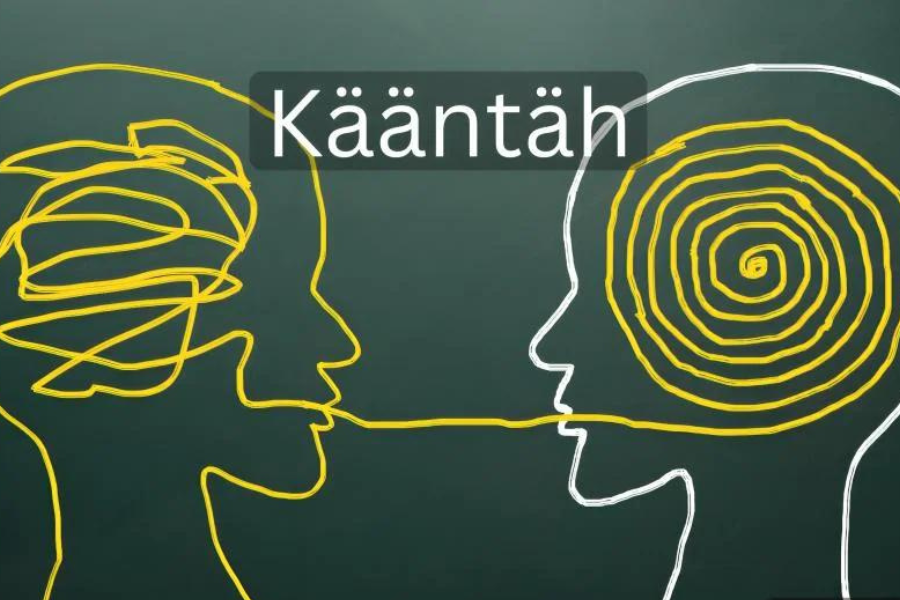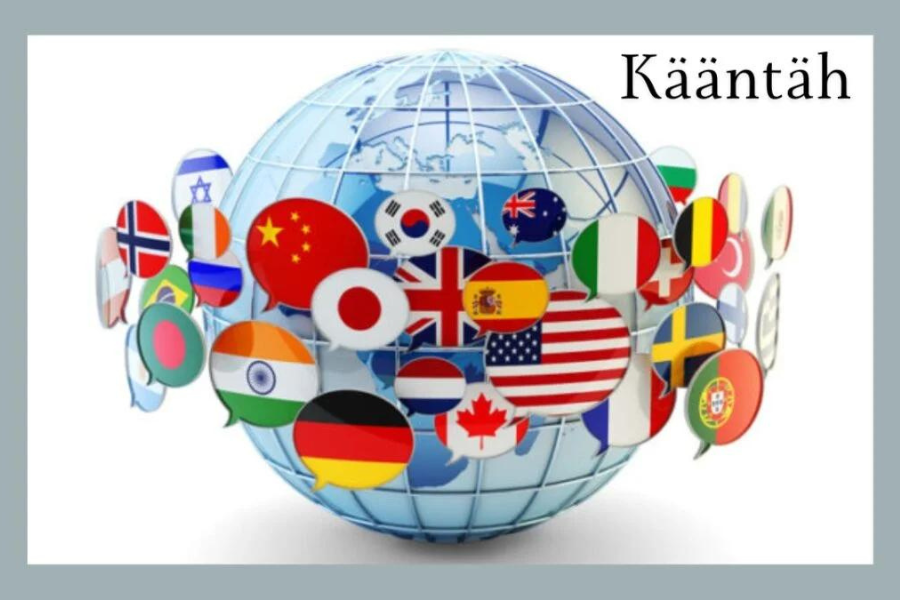Understanding Kääntäh: A Comprehensive Exploration of Transformation
In a world that constantly evolves, the concept of Kääntäh emerges as a profound and versatile notion. Although not widely recognized, Kääntäh encapsulates the essence of transformation and change, serving as a powerful metaphor for both personal and societal evolution. This article delves into the meaning, cultural significance, and contemporary applications of Kääntäh, offering insights into how this concept can guide individuals and communities through various forms of change.
The Meaning and Origin of Kääntäh
At its core, Kääntäh embodies the idea of turning or changing direction. The term’s origins are somewhat elusive, but it is believed to derive from ancient languages where it signified a literal or metaphorical shift in form or direction. Linguists have traced its roots to old terms meaning “to turn” or “to change course,” reflecting its deep-seated association with transformation. Over time, Kääntäh has evolved from a term denoting physical movement to one representing more abstract changes in mood, perspective, or state of being.
The Cultural Significance of Kääntäh: A Historical Background
Kääntäh has held significant cultural value across various societies throughout history. Historically, the concept was linked with periods of substantial upheaval or transition, such as personal milestones, societal changes, or cosmic events. In ancient rituals, Kääntäh symbolized rebirth and renewal, marking the end of one phase and the beginning of another. This symbolism highlights the role of Kääntäh in fostering resilience and optimism during transformative times.
Changes Over Time
As cultures evolved, so did the understanding and application of Kääntäh. Originally tied to physical actions or changes in direction, the term’s meaning has become more abstract over time. In modern contexts, Kääntäh often describes shifts in mental states or emotional perspectives, illustrating its adaptability and enduring relevance. The evolution of Kääntäh reflects broader societal changes and the increasing complexity of human experiences.
Kääntäh in Contemporary Context: Its Current Usage
Today, Kääntäh is a multifaceted concept prevalent in various aspects of modern life. It is frequently associated with positive transitions and new beginnings, appearing in contexts ranging from social media trends to motivational discourse. Whether applied to business strategies, personal growth, or cultural movements, Kääntäh continues to be a vital tool for navigating change and embracing new opportunities.
Popularity in Various Cultural Contexts
The concept of Kääntäh transcends its initial cultural boundaries, gaining traction in diverse global communities. In some cultures, Kääntäh is synonymous with resilience, while in others, it represents creativity or adaptability. Its universal appeal lies in its ability to foster development and transformation across different cultural settings, underscoring its relevance in a globalized world.
The Linguistic Aspect of the Etymology of Kääntäh
Exploring the etymology of Kääntäh reveals a blend of ancient terms related to turning or changing direction. This linguistic evolution highlights the term’s foundational concept of metamorphosis. The term has been translated into various languages over time, each adaptation preserving the core idea of transformation while adding unique cultural nuances.
Variations Across Languages
While Kääntäh is a specific term, similar concepts exist in other languages. For instance, the Japanese word “Kaizen,” meaning “continuous improvement,” closely aligns with the essence of Kääntäh. Similarly, the Latin term “Versus,” meaning “turned,” echoes the notion of change. These linguistic variations demonstrate a shared global recognition of the importance of transformation and adaptation.
Literature and Media References to Kääntäh in Popular Culture
Kääntäh frequently appears in literature and media, often symbolizing significant turning points in narratives. In literary works, Kääntäh is used to represent transformative journeys or pivotal moments of change for characters and plots. This symbolism underscores the concept’s importance in storytelling and its capacity to convey profound shifts in understanding or circumstances.
Literature’s Representation
In classical literature, Kääntäh is employed as a symbol of the hero’s journey or societal change. Stories featuring Kääntäh often revolve around characters overcoming obstacles to effect significant transformations in their world or themselves. These narratives highlight the concept’s role in illustrating personal and collective growth.
The Philosophical Viewpoint: Interpretation and Symbolism
Philosophically, Kääntäh embodies the dynamic nature of life. It represents the idea that progress and enlightenment emerge from embracing inevitable change. By challenging the notion of static consistency, Kääntäh emphasizes that true strength lies in the ability to adapt and evolve. This philosophical perspective encourages individuals to view change as an opportunity for growth rather than a setback.
Using Kääntäh as a Parable
Kääntäh serves as a powerful metaphor for life’s journey. Just as a river may alter its course to adapt to changing conditions, individuals and cultures must also adjust to the fluid nature of existence. This allegory encourages viewing change as a natural and essential component of personal and societal development.
Kääntäh in Everyday Life: Useful Applications
The concept of Kääntäh can be applied to various aspects of daily life. Embracing Kääntäh can guide individuals through career changes, habit formation, or shifts in perspective. For example, someone feeling stagnant in their routine might apply Kääntäh by exploring new activities or adopting different approaches to revitalizing their life.
Illustrations of Kääntäh in Practice
Consider a company that faced challenges due to shifting consumer preferences. By embracing the concept of Kääntäh, the company rebranded and introduced new products that aligned with market demands. This strategic shift not only helped the company navigate its difficulties but also propelled it to new levels of success. This example demonstrates how Kääntäh can drive positive outcomes through adaptability and innovation.
In Social Media, Kääntäh
In the digital age, Kääntäh has gained prominence as a hashtag and concept on social media. People use #Kääntäh to share significant life transitions and personal growth stories. This trend reflects a broader cultural movement that values adaptability and celebrates transformative experiences. Viral moments often highlight individuals’ Kääntäh experiences, showcasing the widespread appeal of the concept.
Hashtags and Moments of Go Viral
The hashtag #Kääntäh has achieved popularity across various online platforms, particularly those focused on health, entrepreneurship, and self-improvement. Users share their “Kääntäh moments,” pivotal events that led to substantial personal or professional change. These stories often resonate with a wide audience, emphasizing the concept’s relevance and impact.
The Influence and Social Changes of Kääntäh on Society
Kääntäh has played a significant role in societal development, influencing movements for social justice, environmental sustainability, and other causes. These movements exemplify the power of personal growth as a foundation for collective change. Kääntäh underscores the interconnectedness of individual and societal progress, highlighting how personal transformations contribute to broader social advancements.
The Cultural Phenomenon of Kääntäh
As a cultural phenomenon, Kääntäh represents a shift in how society perceives change and adaptability. Rather than viewing change as a challenge, it is increasingly seen as an opportunity for personal and collective growth. This cultural shift has impacted various domains, including business practices and educational methods, fostering a more resilient and dynamic society.
Kääntäh and Individual Growth
Incorporating Kääntäh into one’s life can lead to significant personal growth and success. By embracing change and adapting to new circumstances, individuals can overcome obstacles and achieve greater fulfillment. Kääntäh encourages viewing challenges as opportunities for development, enhancing one’s ability to navigate life’s complexities with confidence and resilience.
Kääntäh as a Growth Instrument
Kääntäh serves as a valuable tool for personal development. By fostering adaptability and openness to new experiences, individuals can advance and evolve more effectively. Whether through acquiring new skills, forming healthier habits, or altering one’s mindset, Kääntäh supports the journey toward personal growth and self-improvement.
Problems Associated with Misconceptions and Abuse of Kääntäh
Despite its advantages, Kääntäh can be misunderstood or misused. Not all changes are beneficial, and it is crucial to discern when to embrace Kääntäh and when to maintain the status quo. Misapplication of the concept can lead to unnecessary confusion and disruption, particularly in social or professional contexts.
Discover the Latest Insights: Cnbcblog.com
Overcoming Typical Obstacles
Successfully implementing Kääntäh requires awareness of potential challenges and strategies to overcome them. This may involve seeking guidance from mentors, considering the potential impacts of change, and exercising caution in applying Kääntäh in various situations. By addressing these obstacles, individuals can better navigate the complexities of transformation.
Kääntäh in the Field of Education
In educational settings, Kääntäh is increasingly recognized as a key concept for students to understand. Teaching resilience and flexibility helps students navigate change in both academic and personal contexts. This approach prepares students to face future challenges with courage and innovation, equipping them for success in a dynamic world.
Relevance to Scholarly Research
Scholarly research on Kääntäh spans multiple fields, including business, sociology, and psychology. Understanding how change affects individuals and society is essential for developing effective strategies in various domains, from social work to leadership. Research on Kääntäh contributes to a deeper comprehension of transformation and its implications.
Technology Integration in Digital Platforms with Kääntäh
Technology plays a significant role in the dissemination and adoption of Kääntäh. Digital platforms facilitate the rapid exchange of ideas, stories, and strategies related to transformation. Social media groups, webinars, and online courses offer resources for those seeking to incorporate Kääntäh into their lives.
The Technological Future of Kääntäh
As technology continues to advance, the applications of Kääntäh will evolve. Future developments may include AI-powered tools that assist with navigating personal and professional transformations. These innovations will likely enhance the effectiveness of Kääntäh in various contexts, further supporting individuals and organizations in their growth journeys.
Conclusion
Kääntäh stands as a compelling symbol of transformation and change. Its rich cultural significance, philosophical depth, and contemporary relevance underscore its importance in navigating the complexities of modern life. By understanding and embracing Kääntäh, individuals and societies can better adapt to change, fostering personal growth and collective advancement. As we move forward, the concept of Kääntäh will undoubtedly continue to inspire and guide us through the ever-evolving landscape of life.






